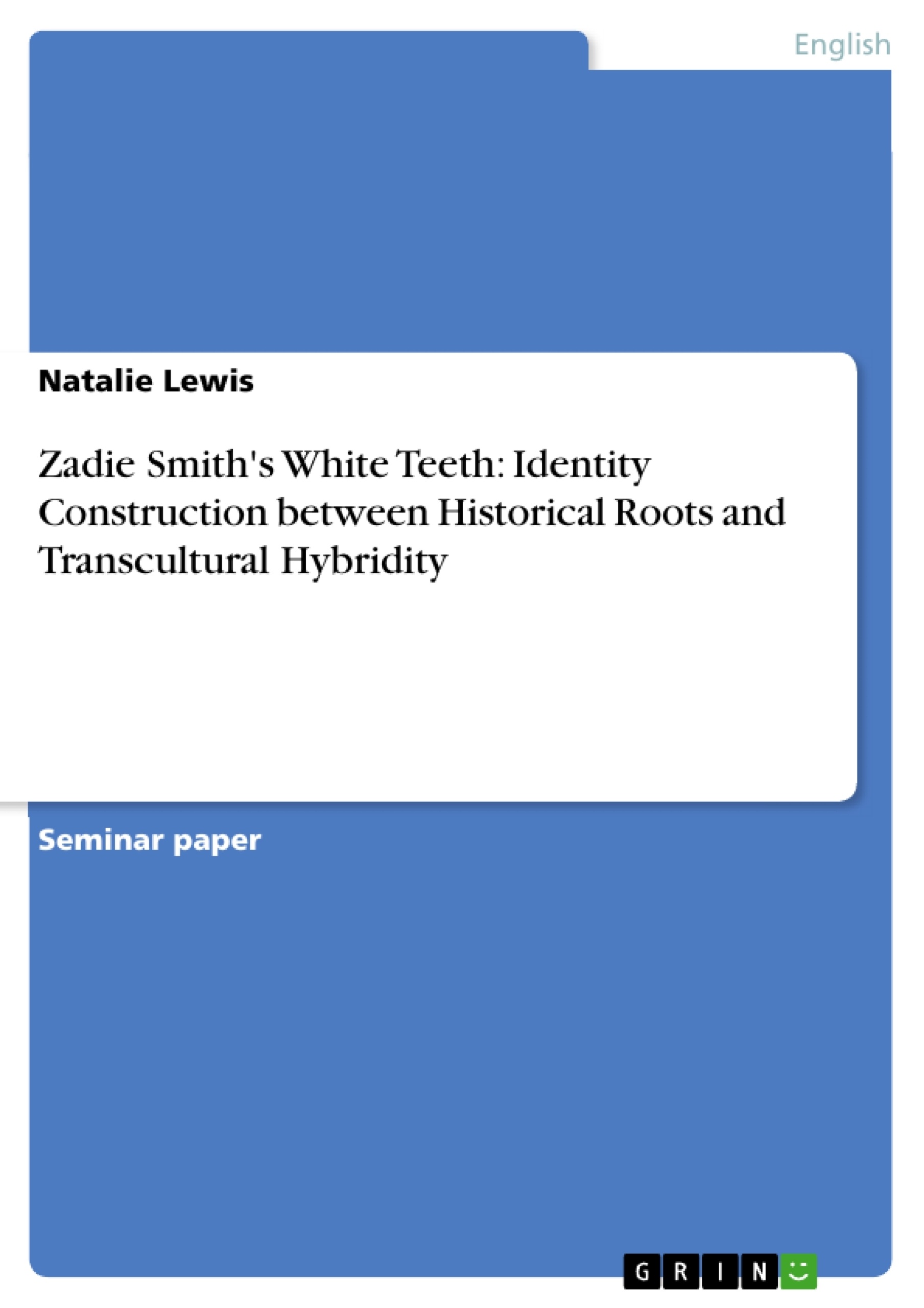In 1997, Zadie Smith, a young talented graduate from Cambridge, set out to write a novel about a simple white working-class Londoner who lives a good life throughout the 20th century by accident. Three years later, the author published her fictional debut,White Teeth, which gives its readers a panoramatic view of multicultural British society. The plot evolves around three families of different ethnic origins living in north-western London. In contrast to other initial works of contemporary Black British novelists, Zadie Smith’s first novel is not the usual account of Black youth experience in Britain written from an autobiographical perspective. On more than 500 pages, the Anglo-Jamaican author explores a wide range of themes such as Second World War experiences, first-generation migrant life in the diaspora, recent British youth culture, intergenerational family conflicts, radical religious fanatism and biogenetical engineering. Despite its numerous discourses, diverse characters and multiple time-layers, all of the novel’s addressed issues center around the problem of the individual person forming an authentic identity in a multicultural society and the establishment of a new national identity in postcolonial Britain. Zadie Smith explores the characters’ identity conflicts before the background of their family history. However, while genetic inheritance, cultural origins and prehistory seem to play an important part in the individual’s development, chance and personal choice are deceisive factors which have the potential to overrule any apparently predetermined life path. History and fate are constantly intermingled throughout the narrative, which is at the same time a migrant novel, bildungsroman and family saga.
Table of Contents
- Introduction
- 1. Problems of Identity Construction in Post-Colonial Britain
- 2. The Concept of History
- 3. The Concept of Transcultural Hybridity
- Conclusion
Objectives and Key Themes
The main objective of this paper is to explore the complex issue of identity construction in Zadie Smith's White Teeth, examining how characters grapple with their individual identities within a multicultural and postcolonial British society.
- The challenges of identity formation in post-colonial Britain
- The interplay of history, culture, and personal choice in shaping identity
- The complexities of multiculturalism and its impact on individual and national identities
- The exploration of family dynamics, including intergenerational conflicts and bonds
- The contrasting experiences of first and second generation migrants in Britain
Chapter Summaries
The introduction provides an overview of Zadie Smith's White Teeth, highlighting its portrayal of multicultural British society and its exploration of diverse themes, including Second World War experiences, migration, and intergenerational family conflicts. It establishes the central focus of the novel: the formation of authentic identities within a multicultural context.
Chapter 1 delves into the complexities of identity construction in post-colonial Britain. It examines the novel's engagement with the migrant narrative, the bildungsroman, and the historical novel, highlighting how these genres contribute to understanding the characters' identities. The chapter analyzes the challenges faced by migrants in navigating a predominantly white society and the intracultural conflicts that arise from assimilation and the retention of cultural heritage.
Keywords
Key terms and concepts explored in this work include identity construction, post-colonial Britain, multiculturalism, migration, diaspora, transcultural hybridity, family dynamics, historical roots, and the interplay of personal choice and fate.
- Citar trabajo
- Natalie Lewis (Autor), 2004, Zadie Smith's White Teeth: Identity Construction between Historical Roots and Transcultural Hybridity, Múnich, GRIN Verlag, https://www.grin.com/document/55924



